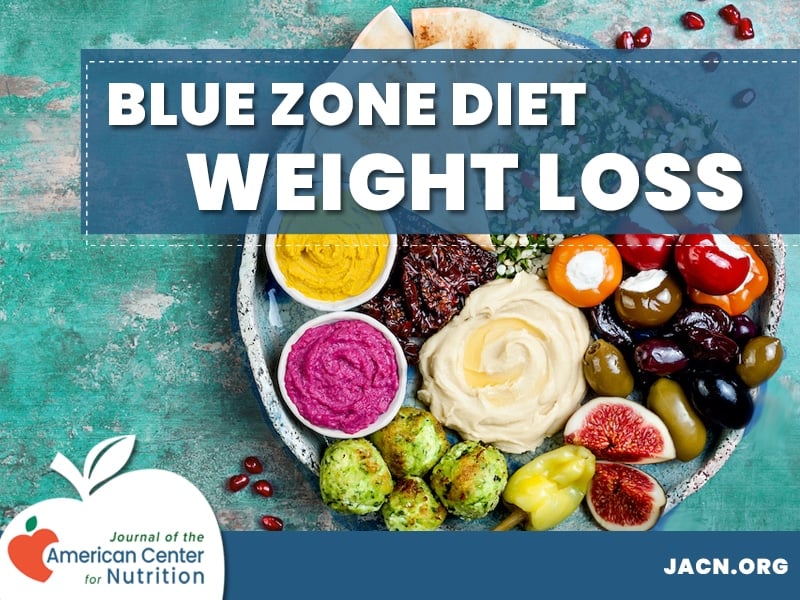
Diets come and go, and finding new ways to maintain health and weight can feel challenging at times. This is where The Blue Zones diet can offer something different for those seeking change.
The premise of The Blue Zones diet is that it follows the lifestyle of those in the blue zones of the world – communities that live longer and healthier lives than the average human. It’s completely natural and can be a great way to improve your overall health.
The diet uses many of the eating habits and lifestyle patterns of those who live in these regions, implementing a completely different way of looking at things into your own life.
Can You Lose Weight Using the Blue Zone Diet?
The Blue Zones diet is designed to help you live a longer, healthier life. While it may not be specifically designed to help you lose weight, it can lead to weight loss over time if you follow it correctly.
The diet is high in fiber and low in sugar and processed foods, which can help you lose weight without feeling hungry or deprived.
It also includes plenty of fruits and vegetables, whole grains, legumes and nuts, which are all healthy and filling foods.
Expert Tip: The diet can be hard to stick to because it is so restrictive. It may not be appropriate for everyone, especially those with medical conditions such as diabetes or heart disease.
How Does Weight Loss Work on The Blue Zones Diet?
The Blue Zones diet is not specifically designed for weight loss. However, it can lead to weight loss over time for some people.
Weight loss on this diet works by eating mostly plant-based foods, which are high in fiber and low in sugar.
It also includes many fruits, vegetables, whole grains, legumes and nuts. These nutritious foods will help you lose weight and keep it off in the long term.
What is the Blue Zones Diet?
The Blue Zones diet is an eating plan that resembles the dietary habits of those who live in five areas throughout North and Central America, Europe, and Asia–locations where the inhabitants are 10 times more likely than Americans to reach age 100.
The diet is called the “blue zone diet” because researchers first identified these geographic regions by drawing blue circles around them on a map.
Nutritients published a study that people living in blue zone areas are less likely to develop chronic diseases [3]. This is due majorly in part to their diet.
How Does the Blue Zone Diet Work?
It’s all about the way in which you eat as well as the foods you include in your diet. The Blue Zone diet uses the 80% rule, which means you should only eat until you’re 80% full.
This allows your body to have a natural break from overeating, giving your digestive system a chance to rest and reset. It also means you’re less likely to crave unhealthy foods later on.
Where are the Blue Zones in the World?
There are five blue zones in the world, and these locations have been deemed areas where people live longer than average lives on account of their diet and lifestyle choices.
Perhaps the most interesting aspect is that while they do share some similarities, they are also completely unique in the way they operate.
Okinawa, Japan
The Okinawa blue zone is located in the Ryukyu Islands in Japan. The people here have the world’s highest concentration of centenarians.
Research has shown that their diet plays a big role in their longevity [1]. Okinawa residents eat plenty of sweet potatoes, tofu, and green and yellow vegetables. They also eat fish and moderate amounts of pork.
One study found that the Okinawa diet was associated with a lower risk of frailty and disability in older adults [2].
The people of Okinawa also have a strong sense of community and maintain close social ties. They are also very active, even into old age.
Sardinia, Italy
The blue zone of Sardinia is located in the mountainous region of the island. The people here have one of the world’s lowest rates of middle-age mortality.
The Sardinian diet is based on whole grains, beans, vegetables, and fruits. Sheep’s milk, cheese, and wine are also part of the diet.
In many circles, the diet in Sardinia and Greece (below) is referred to as the Mediterranean Diet, a healthy diet that includes a lot of plant-based protein and fits in with the blue zone requirements.
Ikaria, Greece
Ikaria is a blue zone located in the Aegean Sea. The people here have one of the world’s lowest rates of middle-age mortality.
The Ikarian diet is based on locally grown and sourced foods. Fruits, vegetables, beans, and wild greens are all staples of the diet.
Fish, especially small ones caught in the island’s waters, are also eaten regularly. Goat’s milk and honey are also consumed.
Nicoya, Costa Rica
Nicoya is a blue zone located in Costa Rica. The people here often reap the benefits of a long and healthy life that stands above the world average.
The Nicoya diet is based on beans, corn, squash, yams, and sweet potatoes. Fish, chicken, and eggs are also consumed.
Loma Linda, California
Loma Linda is a blue zone located in California. The people here have some of the world’s highest rates of longevity.
The Loma Linda diet is based on fruits, vegetables, whole grains, and beans. Dairy, poultry, and red meat are eaten in moderation.
What’s more, the Seventh-day Adventist religion, to which many Loma Linda residents belong, also plays a role in their longevity. The religion promotes a healthy lifestyle, including regular exercise and a vegetarian diet.
What are the Health Benefits of The Blue Zones Diet?
The blue zones diet has been shown to offer a number of potential health benefits, including aiding weight loss in some cases.
One study found that The Blue Zones diet was associated with a lower risk of obesity and weight gain over time [4]. The study participants who followed The Blue Zones diet were also more likely to maintain a healthy weight.
The Blue Zone diet is also high in fiber and low in sugar and processed foods, which can help you lose weight without feeling hungry or deprived.
In addition, The Blue Zone diet can help improve your overall health. Studies have shown that The Blue Zones diet is associated with a lower risk of chronic disease, heart disease, cancer, and diabetes [3].
What’s more, The Blue Zones diet has been shown to improve cognitive function and reduce the risk of dementia [5].
What are the Risks of the Blue Zone Diet?
The Blue Zone diet is a very restrictive diet and can be hard to stick to. It may not be appropriate for everyone, especially those with medical conditions such as diabetes or heart disease.
In addition, The Blue Zone diet may not be sustainable long-term. The Blue Zone diet is based on locally sourced and grown foods, which may not be available to everyone.
Finally, The Blue Zone diet requires a lot of cooking from scratch. This can be time-consuming and may not be realistic for some people.
Which Foods Can You Eat on the Blue Zone Diet?
While on The Blue Zone diet, there is a wide range of food that you can eat. This includes:
- fruits
- vegetables
- whole grains
- legumes
- nuts
- fish
- poultry
- red wine (in moderation)
Which Foods Should You Avoid on the Blue Zones Diet?
There are also some foods that you should avoid while on The Blue Zone diet.
Food you should avoid on The Blue Zone Diet includes:
- processed foods
- sugary foods
- refined grains
- unhealthy fats
- red meat
Expert Tip: If you’re thinking about starting The Blue Zone diet, it’s important to speak to your doctor first. They can help you determine if the diet is right for you and offer guidance on how to stick to it.
Frequently Asked Questions
Can You Drink Coffee on The Blue Zone Diet?
Yes, you can drink coffee on The Blue Zone diet. In fact, coffee is a staple of the diet in some blue zones, such as Nicoya, Costa Rica.
Can You Eat Dairy on The Blue Zone Diet?
Dairy is allowed on The Blue Zone diet, but it should be consumed in moderation. This means that you should limit your intake of dairy products such as milk, cheese, and yogurt.
Can You Drink Wine on the Blue Zone Diet?
Yes, you can drink wine on The Blue Zone diet. In fact, wine is a part of the diet in some blue zones, such as Sardinia, Italy. However, you should only drink wine in moderation.
How Much Exercise Should You Do on The Blue Zone Diet?
There is no set amount of exercise that you should do on The Blue Zone diet. However, the diet does promote an active lifestyle. This means that you should aim to get 30 minutes of moderate exercise most days of the week.
How Long Should You Stay on The Blue Zone Diet?
There is no set amount of time that you should stay on The Blue Zone diet. However, the diet is meant to be followed long-term. This means that you should aim to stick to the diet for the rest of your life.
Is the Blue Zone Diet Right for You?
The Blue Zone diet is a plant-based diet that includes plenty of fruits and vegetables, whole grains, legumes, and nuts. It also allows for small amounts of fish and poultry, as well as red wine in moderation.
The Blue Zone diet has been shown to be associated with a number of health benefits, including weight loss, improved cognitive function, and a reduced risk of heart disease and dementia.
However, the diet is very restrictive and may not be appropriate for everyone. If you’re thinking about starting The Blue Zone diet, it’s important to speak to a health professional first.
REFERENCES:
- https://www.ncbi.nlm.nih.gov/pmc/articles/PMC5403516/
- https://www.mdpi.com/2072-6643/13/12/4310/htm
- https://www.ncbi.nlm.nih.gov/pmc/articles/PMC6125071/
- https://www.bluezones.com/2020/07/blue-zones-diet-food-secrets-of-the-worlds-longest-lived-people/
- https://www.bluezones.com/2017/07/diet-dementia-foods-increase-decrease-alzheimers-risk/

